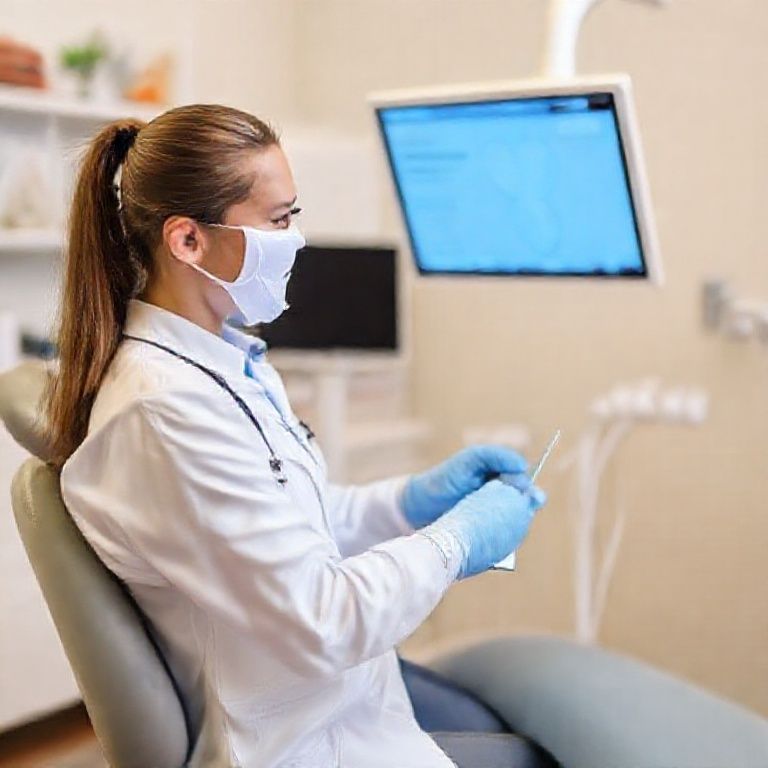A Bridge to Better Health: Navigating Free Dental Clinics in Michigan
A sharp, throbbing pain in a tooth is an experience that commands absolute attention. It can make it impossible to eat, sleep, or concentrate. For the millions of Michiganders who lack dental insurance or the financial means to pay out-of-pocket, this pain is more than a temporary discomfort; it is a source of chronic suffering, a barrier to employment, and a gateway to more severe health complications. Dental care is often relegated to a luxury, a non-essential service to be postponed until a minor cavity becomes a debilitating abscess. This reality has created a silent epidemic of untreated oral disease, hidden behind the closed lips of those who have learned to endure the pain.
Yet, across the Great Lakes State, a network of compassion and resilience is fighting back. From the urban centers of Detroit and Grand Rapids to the remote towns of the Upper Peninsula, a dedicated coalition of non-profit organizations, dental schools, government agencies, and thousands of volunteer dental professionals are building a safety net. Free dental clinics serve as critical access points in this network, offering not just relief from pain, but also restoration of dignity and hope. This article is not merely a directory; it is a comprehensive guide, a deep exploration of the ecosystem of free dental care in Michigan. It aims to empower you with the knowledge to navigate this system, understand your options, and take the first, crucial step toward reclaiming your oral health. We will journey through the why, the how, and the where, illuminating the path to a healthier smile for every resident in need.

2. Understanding the Landscape: Why Free Dental Care is a Critical Public Health Need
To appreciate the vital role of free dental clinics, one must first understand the profound consequences of going without care. Oral health is not an isolated component of well-being; it is intrinsically linked to the overall health of the human body.
The Oral-Systemic Health Link: More Than Just a Smile
The mouth is a window to the body’s health. Chronic inflammation from periodontal (gum) disease has been strongly linked to a host of systemic conditions. The bacteria responsible for gum disease can enter the bloodstream, traveling to other parts of the body and contributing to:
-
Cardiovascular Disease: Research indicates a correlation between periodontitis and an increased risk of heart attack, stroke, and atherosclerosis (hardened arteries).
-
Diabetes: The relationship between diabetes and gum disease is a two-way street. Diabetics are more susceptible to severe gum disease, and severe gum disease can make it more difficult to control blood sugar levels.
-
Respiratory Infections: Bacteria from the mouth can be aspirated into the lungs, leading to pneumonia, particularly in elderly or immunocompromised individuals.
-
Adverse Pregnancy Outcomes: Periodontal disease has been associated with preterm birth and low birth weight.
When free clinics provide a cleaning or treat an infection, they are not just saving a tooth; they are potentially mitigating risks for these far more serious and costly health conditions.
The Barriers to Care: Cost, Insurance, and Access in Michigan
The primary barrier to dental care is unequivocally financial. A routine examination and cleaning can cost over $100, while a root canal and crown can easily exceed $2,000. For the uninsured, these prices are prohibitive. Even for those with insurance, high deductibles and copays can be a significant deterrent.
In Michigan, the access issue is compounded by geographical disparities. Many of the state’s nearly 6,000 licensed dentists are concentrated in suburban and affluent urban areas. This creates “dental deserts,” particularly in rural northern Michigan and the Upper Peninsula, where residents may have to travel hours to find a provider. Furthermore, not all dentists accept Medicaid, the public health insurance for low-income individuals. While Medicaid dental coverage for children in Michigan is relatively robust, adult coverage has historically been limited, often covering only emergency extractions and pain management, not preventive or restorative care. This creates a cycle where problems are only addressed once they become crises.
The Ripple Effect: How Dental Pain Impacts Employment, Education, and Well-being
The impact of dental disease extends beyond physical health. Consider the following:
-
Employment: A person suffering from a toothache is less productive, more likely to miss work, and may struggle in job interviews due to self-consciousness about their smile.
-
Education: A child with a painful tooth cannot focus in school. Dental pain is a leading cause of school absenteeism.
-
Mental and Social Well-being: Poor oral health is closely tied to social anxiety, depression, and low self-esteem. The ability to smile freely is fundamental to human connection.
Free dental clinics, therefore, are not just healthcare providers; they are engines of social and economic mobility, removing a significant obstacle that prevents individuals from fully participating in society.
3. A Deep Dive into the Types of Free and Low-Cost Dental Services
It is crucial to understand that “free dental care” is not synonymous with “comprehensive dental care.” Services are typically focused on addressing the most urgent needs within the constraints of available resources and volunteer time.
Preventive Care: The First Line of Defense
This is the cornerstone of public health dentistry. Services often include:
-
Oral Exams and X-rays: To diagnose problems early.
-
Dental Prophylaxis (Cleanings): Removal of plaque and tartar to prevent cavities and gum disease.
-
Fluoride Treatments: Especially for children, to strengthen tooth enamel.
-
Sealants: Plastic coatings applied to the chewing surfaces of back teeth to prevent decay in children and teenagers.
-
Oral Health Education: Teaching proper brushing and flossing techniques.
Restorative Services: Repairing the Damage
When prevention fails, restorative services are needed. Free clinics commonly offer:
-
Fillings: To treat cavities, typically using silver amalgam or tooth-colored composite resin, depending on availability.
-
Simple Extractions: Removal of teeth that are severely decayed or infected. This is one of the most common procedures at free clinics.
Emergency Dental Care: Relief for Pain and Infection
This is the most critical function of many free clinics. Emergency services are designed to address immediate, urgent problems, such as:
-
Treatment of Dental Abscesses: This may involve drainage and/or antibiotics, followed by an extraction or root canal.
-
Pain Management: Addressing severe toothaches.
-
Treatment of Oral Trauma.
The Limits of Free Care: Understanding What Typically Isn’t Covered
Due to cost, complexity, and time constraints, the following services are rarely available at free clinics:
-
Cosmetic Procedures: Teeth whitening, veneers.
-
Advanced Restorative Work: Crowns, bridges, and dental implants.
-
Orthodontics: Braces for children or adults (outside of specific charity programs).
-
Dentures: While some clinics may offer denture services, they often have long waiting lists or are part of special events.
-
Complex Oral Surgery: Such as wisdom tooth removals that require sedation.
4. Who is Eligible? Demystifying Requirements for Free Dental Care
Eligibility varies from clinic to clinic, but most use a combination of factors to determine who they can serve.
Income-Based Eligibility and Federal Poverty Guidelines
The most common criterion is income. Most free clinics require patients to have a household income at or below 200% of the Federal Poverty Level (FPL). Some may be more restrictive (e.g., 150% FPL) or more generous. Patients are typically asked to provide proof of income, such as recent pay stubs, a tax return, or an eligibility letter for other assistance programs like SNAP (food stamps).
2024 Federal Poverty Guidelines (for reference)
| Household Size | 100% FPL (Annual) | 200% FPL (Annual) | Common Clinic Threshold |
|---|---|---|---|
| 1 | $15,060 | $30,120 | <$30,000 |
| 2 | $20,440 | $40,880 | <$41,000 |
| 3 | $25,820 | $51,640 | <$52,000 |
| 4 | $31,200 | $62,400 | <$62,500 |
| For each additional person, add | *+$4,380* | *+$8,760* | *+~$8,800* |
Age-Specific Programs: Focus on Children and Seniors
Many programs are specifically designed for vulnerable age groups.
-
Children: Programs like the MI Child insurance program and school-based dental sealant programs ensure children have access to care.
-
Seniors: Some clinics and programs focus on the unique dental needs of seniors, who often live on fixed incomes and may have lost dental insurance after retirement.
Special Circumstances: Veterans, Homeless Populations, and Individuals with Disabilities
Certain clinics cater to specific populations. For example, some Veterans Affairs (VA) facilities provide dental care to eligible veterans, and many community health centers have programs tailored for homeless individuals or those with developmental disabilities.
5. A Regional Directory: Finding a Free Dental Clinic Near You
This directory provides a starting point for your search. Always call ahead to verify hours, eligibility, services, and whether appointments are required.
Southeastern Michigan (Wayne, Oakland, Macomb, Washtenaw Counties)
-
The University of Michigan School of Dentistry (Ann Arbor): Offers significantly reduced fees for care provided by dental students under faculty supervision. A wide range of services is available.
-
Detroit Mercy Dental (Detroit): Similar to U of M, this clinic provides low-cost care delivered by students. It is a major resource for the Detroit metro area.
-
Family Health Center (Various locations in Kalamazoo): A Federally Qualified Health Center (FQHC) that provides dental care on a sliding fee scale based on income.
-
Cass Community Social Services (Detroit): Hosts periodic free dental clinics serving the homeless and low-income communities.
West Michigan (Kent, Ottawa, Muskegon, Kalamazoo Counties)
-
Cherry Street Health Services (Grand Rapids): A major FQHC offering comprehensive medical and dental care on a sliding fee scale.
-
Mission of Mercy West Michigan (Annual Event): A large-scale, temporary clinic typically held in Grand Rapids, offering free extractions, fillings, and cleanings on a first-come, first-served basis.
-
Muskegon Family Care (Muskegon): An FQHC providing integrated health and dental services.
Mid-Michigan (Ingham, Genesee, Saginaw, Bay Counties)
-
Great Lakes Bay Health Centers (Bay, Midland, Saginaw): A network of FQHCs offering dental care with a sliding fee scale.
-
Genesee Health Plan (Flint): While not a direct provider, this organization helps uninsured residents of Genesee County access low-cost medical and dental care through a network of partners.
-
Ingham Community Health Centers (Lansing): Provides medical, dental, and behavioral health services regardless of ability to pay.
Northern Michigan & The Upper Peninsula
-
MyCommunity Dental Centers (Multiple Locations): A non-profit network specifically created to expand access to dental care for Medicaid-enrolled and low-income uninsured patients across Michigan, with numerous clinics in the northern Lower Peninsula and UP.
-
Upper Peninsula Association of Rural Health Services (Various locations): A group of FQHCs serving the vast and rural UP.
-
Northern Michigan University Dental Clinic (Marquette): Offers low-cost care provided by dental hygiene students.
6. Major Providers and Annual Events: Pillars of Michigan’s Dental Safety Net
Mission of Mercy (MOM) Clinics
The Michigan Dental Association’s Mission of Mercy is a spectacular display of volunteerism. For two days, hundreds of dental professionals and general volunteers transform a large venue (like a fairgrounds or arena) into a massive dental clinic. All services are free, and no questions are asked regarding income. Patients often camp out overnight to secure a place in line. In a single weekend, a MOM clinic can provide millions of dollars in free dental care to thousands of individuals. It is a vital resource for those who have fallen through the cracks of the traditional healthcare system.
The University of Michigan School of Dentistry & Detroit Mercy Dental
These two institutions are not just educational facilities; they are pillars of community service. By providing low-cost care, they ensure a steady flow of services to the public while training the next generation of dentists. The wait for an appointment can be longer than at a private practice, but the cost savings are substantial, and the care is supervised by licensed, experienced faculty.
Federally Qualified Health Centers (FQHCs)
FQHCs, like the Family Health Centers and Cherry Street Health Services, are community-based organizations that receive federal funding to provide primary care services in underserved areas. They are required to offer a sliding fee scale based on income and to provide care to all, regardless of ability to pay. Many FQHCs have integrated dental clinics, making them a one-stop shop for whole-person care.
7. A Guide to Your First Visit: What to Expect and How to Prepare
Being prepared can make the experience smoother and less stressful.
-
Documentation: Bring a government-issued ID, proof of all household income (pay stubs, tax returns, benefit statements), and proof of residency (utility bill, lease agreement).
-
Prepare for Wait Times: Whether it’s a walk-in clinic or a large event, be prepared to wait for several hours. Bring a book, charger for your phone, water, and any necessary medications.
-
Medical History: Be ready to provide a complete medical history, including a list of all medications and allergies.
-
Manage Expectations: Understand that the goal is to address the most pressing dental needs. You may not receive a full, comprehensive treatment plan in one visit.
8. Beyond the Clinic Chair: Additional Resources and Financial Assistance Programs
-
Michigan Medicaid: Check your eligibility for Medicaid (Healthy Michigan Plan). While adult dental benefits are limited, it is a crucial payer for emergency services and can be used at any enrolled provider.
-
Donated Dental Services (DDS): This national program, often run by state dental associations, matches low-income, elderly, or disabled individuals with volunteer dentists who donate their services. The process can be slow but can provide complex care that free clinics cannot.
-
Dental Discount Plans: For a low annual fee, these plans offer a discount on services at participating dentists. They are not insurance, but can make care more affordable for some.
9. The Volunteer’s Perspective: The Heartbeat of Free Dental Care
Free clinics exist only through the generosity of volunteers: dentists, dental hygienists, assistants, and countless community members who handle registration, translation, and patient guiding. For these professionals, volunteering is a way to give back and practice the most altruistic form of their profession. The gratitude expressed by patients is often described as the most rewarding part of their careers.
10. Policy and the Future: Building a Sustainable Model
The current model of free dental care, reliant on volunteers and charitable events, is not a sustainable long-term solution to a systemic problem. Advocacy is focused on:
-
Expanding Adult Medicaid Dental Benefits to include preventive and restorative care.
-
Increasing Reimbursement Rates for Medicaid providers to encourage more dentists to participate.
-
Integrating Oral Health more fully into primary medical care.
-
Supporting Teledentistry initiatives to reach rural and homebound patients.
11. Conclusion: Reclaiming Oral Health, One Smile at a Time
The network of free dental clinics in Michigan represents a powerful, community-driven response to a profound public health challenge. It is a system built on compassion, resilience, and the unwavering belief that oral health is a fundamental human right. While the path to care may require patience and perseverance, the resources exist. By understanding the landscape, preparing for the process, and reaching out for help, thousands of Michiganders each year find relief from pain and take a vital step toward better health and a renewed sense of confidence. Your smile is worth the effort.
12. Frequently Asked Questions (FAQs)
Q1: I have a dental emergency right now (severe pain, swelling). What should I do?
A: If you have facial swelling or difficulty breathing or swallowing, go to the nearest hospital emergency room immediately. For severe pain, call 211 or search online for “emergency dental clinic” or “walk-in dental clinic” in your city. Many FQHCs have slots reserved for dental emergencies.
Q2: I don’t have any proof of income or identification. Can I still get help?
A: It depends on the clinic. Large-scale events like Mission of Mercy typically do not require any documentation. Some community clinics may still see you but will require you to complete a form self-attesting to your income and situation. It is always best to call and ask.
Q3: Are the services at student clinics safe?
A: Yes. Care provided at dental schools like the University of Michigan and Detroit Mercy is performed by students, but every step of the procedure is closely monitored and checked by licensed, experienced faculty dentists. The trade-off for lower cost is that appointments often take longer.
Q4: How can I volunteer at a free dental clinic if I’m not a dental professional?
A: Absolutely! Free clinics rely heavily on general volunteers for tasks like patient registration, translating, guiding patients between stations, data entry, and setup/cleanup. Contact the clinic or organization directly to inquire about volunteer opportunities.
Q5: What is the single most important thing I can do to maintain my oral health if I can’t see a dentist regularly?
A: Meticulous at-home care is your best defense. Brush your teeth twice a day for two minutes with a fluoride toothpaste, floss daily, and reduce your consumption of sugary foods and drinks. While this cannot replace professional care, it can significantly slow the progression of decay and gum disease.
13. Additional Resources
-
Michigan 2-1-1: Dial 2-1-1 on your phone or visit www.mi211.org for a comprehensive, searchable database of health and human services, including dental care, in your area.
-
Michigan Dental Association (MDA): www.michigandental.org – Provides information on the Mission of Mercy and a “Find a Dentist” tool.
-
Michigan Department of Health and Human Services (MDHHS): www.michigan.gov/mdhhs – For information on Medicaid and other public health programs.
-
National Institute of Dental and Craniofacial Research (NIDCR): www.nidcr.nih.gov – For reliable, science-based information on oral health conditions.
Date: October 20, 2025
Author: The Public Health Research Group
Disclaimer: The information contained in this article is for informational purposes only and does not constitute medical or legal advice. While we strive to provide accurate and up-to-date information, the availability, services, and eligibility requirements of free dental clinics can change. We strongly recommend contacting the clinics directly to confirm details before seeking care.


